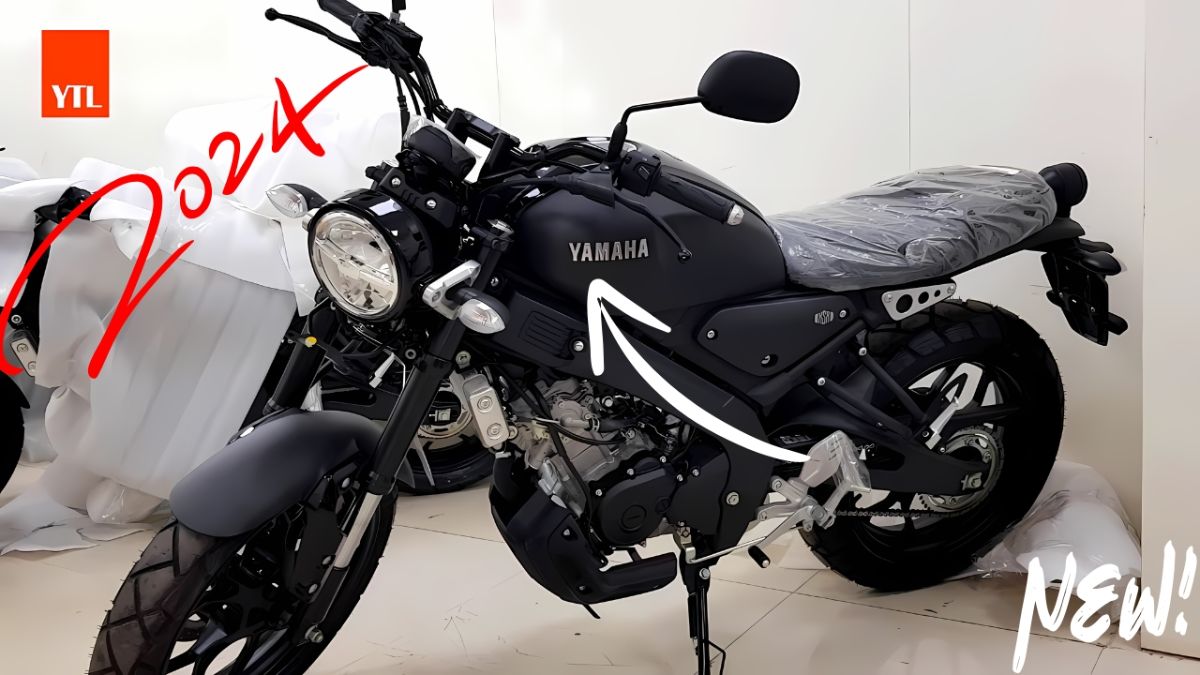Yamaha has created waves in the motorcycle market with its latest offering – the XSR 155. This neo-retro motorcycle beautifully combines vintage aesthetics with modern technology, appealing to both traditional motorcycle enthusiasts and contemporary riders. Let’s explore what makes this bike special.
Striking Design Elements
The XSR 155’s design is a thoughtful tribute to classic motorcycles while embracing modern elements. A round LED headlamp dominates the front, complemented by elegant indicators that maintain the retro theme. The teardrop fuel tank features sculpted lines and practical knee recesses, while the single-piece seat with its cafe racer-inspired design adds a sporty touch.
Attention to detail is evident throughout, from brushed aluminum side panels to the carefully designed exhaust shield. Even the digital instrument cluster is housed in a circular casing, perfectly balancing old-school charm with modern functionality.
Performance and Power
Behind its classic looks lies impressive modern performance. The bike is powered by a 155cc liquid-cooled single-cylinder engine, shared with the sporty Yamaha R15. Producing 19.3 horsepower and 14.7 Nm of torque, it delivers exciting performance for both city riding and highway cruising.
The engine features Variable Valve Actuation (VVA) technology, ensuring smooth power delivery across the rev range. A 6-speed gearbox with slipper clutch provides seamless gear changes and improved control during aggressive downshifts.
Advanced Chassis and Suspension
The XSR 155 rides on Yamaha’s proven Deltabox frame, offering excellent rigidity and precise handling. The suspension setup includes upside-down front forks and a link-type monoshock rear, typically found on more expensive motorcycles. This combination provides confident handling in various riding conditions.
Braking is handled by a 282mm front disc and 220mm rear disc, both equipped with ABS for enhanced safety. Wide handlebars offer good control while maintaining a comfortable riding position.
Modern Technology Integration
Despite its retro appearance, the XSR 155 incorporates modern features. The digital display shows comprehensive information including speed, RPM, gear position, and fuel level. Yamaha’s Y-Connect technology enables Bluetooth connectivity for smartphone integration, providing access to call notifications, maintenance alerts, and riding statistics.
Customization Possibilities
Understanding the importance of personalization, Yamaha designed the XSR 155 with customization in mind. Many components are bolt-on, allowing owners to easily modify their bikes. Options include different seats, handlebars, and fuel tank designs, enabling riders to create truly unique motorcycles.
Market Impact and Positioning
The XSR 155 has potentially created a new segment in the motorcycle market. It offers a fresh alternative in the 150-160cc class, traditionally dominated by sporty commuters. The bike appeals to various riders, from newcomers seeking style to experienced riders wanting a characterful urban motorcycle.
Its blend of retro design and modern engineering makes it an attractive alternative to traditional retro bikes while offering contemporary performance and reliability.
Value Proposition
While positioned as a premium offering in its segment, the XSR 155 provides good value through its unique design, advanced features, and Yamaha’s renowned reliability. Practical aspects like fuel efficiency and easy maintenance, combined with Yamaha’s extensive service network, make it attractive for daily use.
Conclusion
The Yamaha XSR 155 represents more than just another motorcycle launch; it’s a statement about the evolution of motorcycling. By successfully combining classic design with modern technology and performance, Yamaha has created a motorcycle that could inspire a new trend in the market.
The bike offers an engaging riding experience while making a style statement, proving that practicality and emotional appeal can coexist. As it establishes itself in the market, the XSR 155 appears poised to influence both rider preferences and industry trends, potentially marking the beginning of a new era in motorcycle design and appeal.






